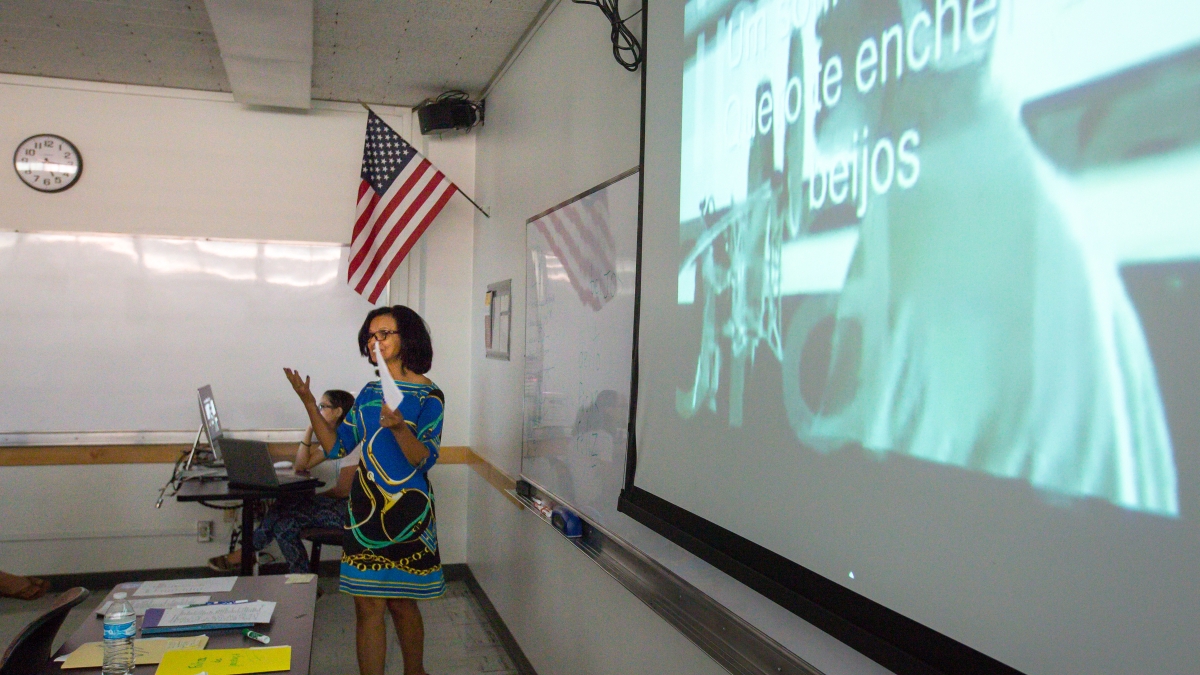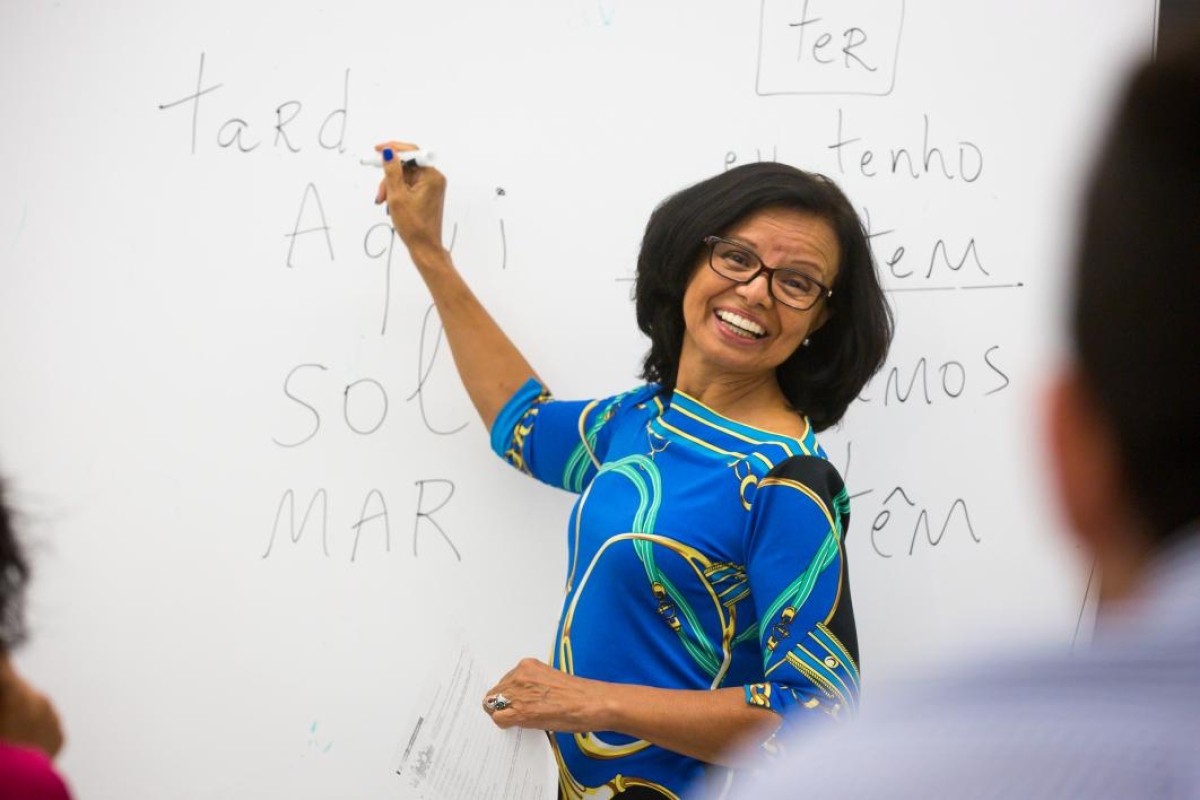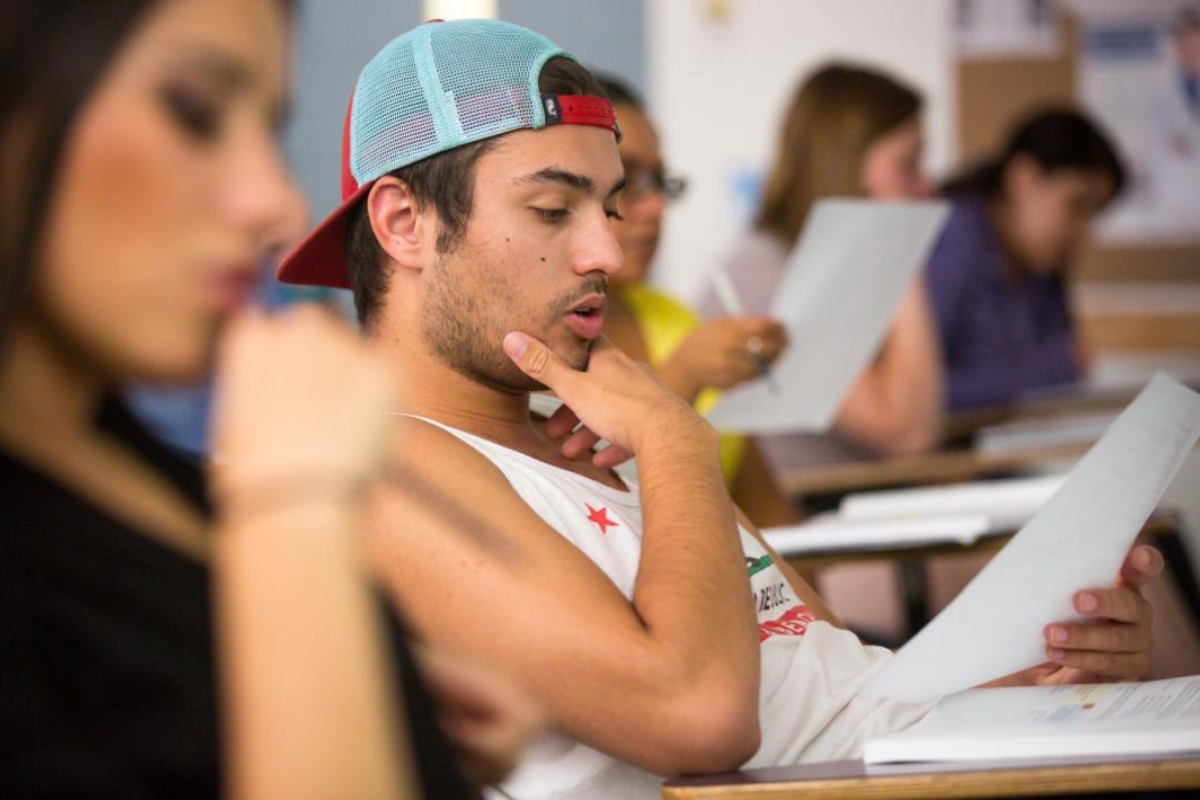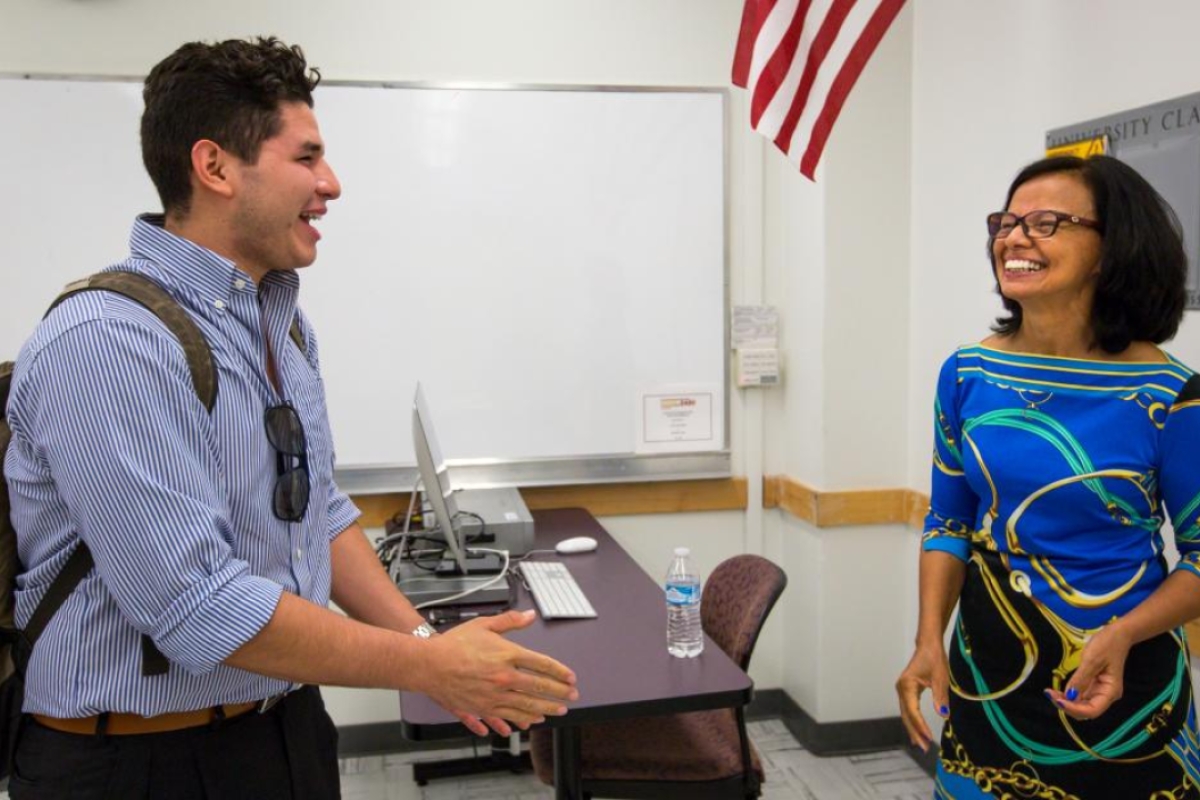Blame it on the bossa nova
Music helps students master Portuguese

Known for his lyrical writing style, 18th-century poet Henry Wadsworth Longfellow called music “the universal language of mankind.”
You might say Arizona State University senior lecturer Clarice Deal is taking a page from his book in her unique approach to teaching Portuguese.
Ever since she began teaching at ASU in 1990, the Sao Paulo native has combined her love of music — in particular bossa nova, a style of Brazilian music derived from samba — with her passion for teaching.
“As I began teaching, I quickly realized that music provides an effective tool to assist in the teaching and acquisition of learning a new language,” said Deal, a member of ASU’s School of International Letters and Cultures faculty.
In fact, she found teaching language with music so effective that she decided to make it the subject of her postgraduate work.
“I began doing research on the subject of teaching with music in general, and later focusing on the subjunctive, a verb tense commonly used to express feelings of regret or desire (‘I wish I had’), that often shows up in music,” she said.
“As I researched I found a significant … amount of material on the use of music in the classroom. Experts identify several advantages of language learning through song: Memory is helped by rhythm; many songs are an excellent source of cultural knowledge, representing national characteristics, trends and tastes with astonishing clarity,” said Deal.
Proof of that is on her students’ lips.
“I have laughed many times while watching students taking tests in class; I sometimes see them silently mouthing a song to remember the verb tense or vocabulary,” she said.
Deal sometimes takes requests from her students, using songs they suggest in her classes. However, she says, the type of songs used is key.
“In my research, I had the opportunity to learn about the intrinsic value of music in language teaching and the many issues that must be taken into consideration to do so,” she said. “The most valuable aspect was the need to choose the songs carefully, and then use them appropriately with other tools in the course curriculum.”
Songs like those of the bossa nova genre, with an emphasis on rhythm and melody, are especially suited to helping students absorb vocabulary and grammar.
And if her students’ responses on instructor evaluation forms are any indication, music as a means of learning is not only constructive, it’s fun and leaves a lasting impression.
“Perhaps the most significant aspect of my work is the use of music in the classroom to teach language,” said Deal. “[My students] constantly comment on it.”
Having taught hundreds of classes to thousands of students, she reflects on her time at ASU as “a great joy and honor to teach people the language and culture of my native country.”
As for those thousands of students, Deal said, “I hope they are still listening to bossa nova.”
The School of International Letters and Cultures is a unit of the College of Liberal Arts and Sciences.



